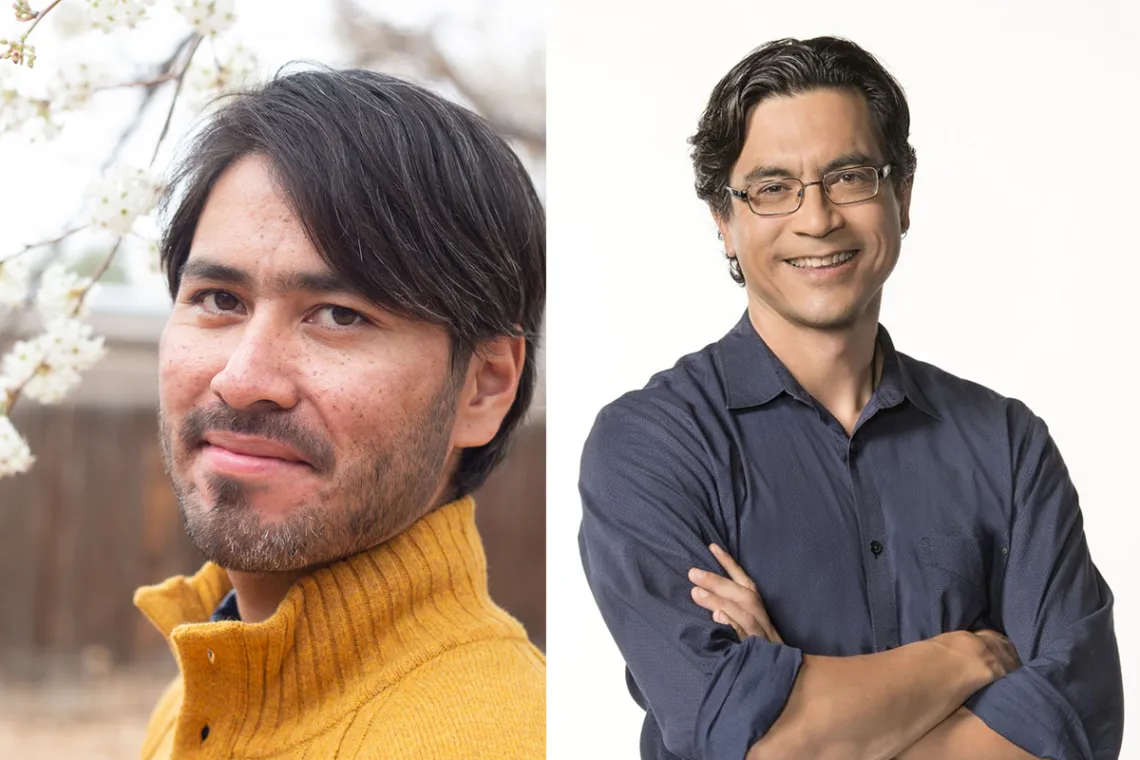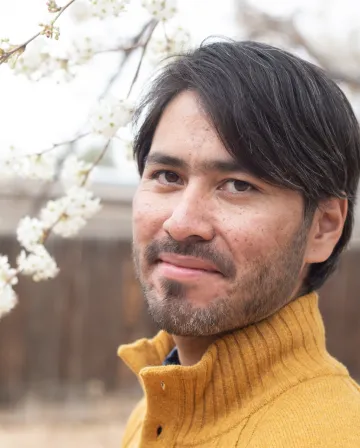Focus on the Quest: Indigenous Correspondents Learn to Craft Compelling Narratives

“Tension keeps people engaged during a story - whether it be a podcast, documentary, or an article. Compelling stories don’t just highlight an issue; they follow the journey of a hero, or multiple heroes, trying to accomplish something while encountering “helpers” and “hinderers” along the way. It’s the interactions with these other characters and forces that create tension and compelling stakes for a good story,” noted Anishnaabe television and radio journalist Duncan McCue during the Ilíiaitchik program’s third workshop, titled “Producing a Publication-ready Story & Pitching.” McCue, who is a member of the Chippewas of Georgina Island First Nation, host of the CBC podcast series Kuper Island, and author of the recently-published book Decolonizing Journalism: A Guide to Reporting in Indigenous Communities, emphasized the importance of identifying components of a quest when crafting stories to better engage, inform, and empower audiences.

Duncan McCue
Image courtesy of CBC Media Centre
After discussing Frodo Baggins’ journey to destroy the ring in Lord of the Rings and Luke Skywalker’s swashbuckling intergalactic fight against the Empire in the Star Wars films, McCue explained the key ingredients that make both these stories compelling quests, and why storytellers should keep these ingredients in mind when crafting both fictional and realistic narratives. “Quests have characters, a journey, a goal, antagonists, as well as “hinderers” who create struggle, and helpers who create hope so the audience has enough momentum to carry on through a story. To be engaging, a story needs all of these elements. To identify them, we should ask ourselves - 1) Who are the people involved in this story?, 2) What’s at stake for them?, 3) Why is this story important?, and 4) Does the story have strong visuals or scenes along the way?” said McCue.
As McCue noted, quest stories feature prominently among many Indigenous cultures, as exemplified in our creation stories, oral histories, and moral teachings. For example, when I was younger my cousins and I would gather around the campfire after deer hunting to hear my grandfather tell stories of Gluskabe; a hero appearing in many of our oral traditions who helped protect humans from vices and environmental dangers following the creation of Kdakinna (the land). These stories are compelling not just because they teach us how to better understand our history, our culture, and/or how to interact respectfully with the world around us, but because they follow memorable characters working to accomplish challenging goals against all odds. We listen to stories more intently when we empathize with the characters and want to see whether they succeed or not.
“Amongst Anishinaabeg, we have a trickster named Nanabush or Nanabozho, who is continually making mistakes and getting into trouble because of his navel-gazing and conceited ways," said McCue. "This quest model of storytelling is important even for our work as investigative and environmental journalists today. Although we write about issues, we need to get back to thinking - but what is the story? This is how we can get people to listen and to care,” said McCue.
McCue concluded the first half of the workshop by encouraging the Indigenous Correspondents to avoid several prevailing tropes in science/environmental reporting that far too often portray Indigenous people as only victims or “exotics.” McCue described how media outlets continue to paint Native people as the victims of colonial processes like global climate change, pollution, and natural resource extraction, without discussing the nuanced ways in which Native people are both assisting and actively fighting these processes. “These portrayals are reductionist, as they fail to acknowledge that Indigenous peoples are also sometimes involved in these issues and are actively combating them,” said McCue. To combat this trope, he encouraged Indigenous Correspondents to craft stories that look beyond suffering and highlight the multifaceted experiences within Native communities.
McCue also noted that science journalists far too often exoticize Native people - portraying them in mystical or stereotyped ways. “We often see this playing out in subtle ways, like when the media only shows images of Native people wearing our beads, buckskin, or headdresses. That is not to say that our traditional regalia isn’t important, nor that it’s bad if someone wants to be depicted in their traditional regalia, but as you know the general public associates things with these images that have nothing to do with our understanding of our traditional regalia. I try my best to go beyond these stereotypical portrayals," McCue added. McCue ended his session by speaking with the Correspondents about their story ideas and providing personalized feedback on how the students can craft more compelling and impactful stories.
Diné, Mandan, Hidatsa, and Tsimshian photographer and investigative journalist Kalen Goodluck led the second half of the workshop, where he spoke about methods for leveraging data and visuals to tell a captivating story. Goodluck (whose work has been featured in The New York Times, High Country News, Pulitzer Center, National Geographic Travel, Popular Science, WIRED, NBC News, and Indian Country Today among others) emphasized that “Visual language is just as much of a language as written or spoken words.”
Goodluck began by describing the groundbreaking investigative piece he helped photograph for High Country News titled, “The land-grant universities still profiting off Indigenous homelands.” As the title suggests, the article - which incorporates photographs, data visualizations, and maps throughout - traces the unjust history of the Morrill Act of 1862 and how 16 land-grant universities continue to profit from stolen Native lands today. Goodluck says the article was “a way to hold universities accountable” and described how he approached taking photographs of parcels of land seized by the Morrill Act to “put a face to the huge dataset we had collected and were trying to digest.” He then described strategies for how young journalists can collect and visualize datasets they create to craft stronger stories.
To conclude the workshop, Kalen assisted the Indigenous Correspondents in brainstorming ways they could approach telling their stories using visual language. Goodluck suggested that reporters begin by first asking what scenes and/or people they’d like to photograph and then considering “what people and places they have access to.” “Taking compelling photographs comes down to being willing to jump on opportunities as they present themselves. Do you want to capture the feeling of getting up early to work on a ranch? Then ask to tag along during the farmer's morning chores.”

Kalen Goodluck
This photo is Copyright ©2020 kalengoodluck. All rights reserved.
Kalen described some of the many general types of stories that can be told through visuals, including “day in the life” stories that provide a snapshot of someone’s lived experiences, photo essays featuring portraiture that build empathy, and stories that show movement and the development of events, among others.
When asked when to use photographs or other visuals in place of written or spoken word, Goodluck said, “It comes down to intuition, but whenever there are opportunities to show movement, emotions, and context that are hard to express in words alone, I think a photograph is a good choice.” Goodluck provided an example of a photograph that does all three - capturing chaos and desperation, resolve and uncertainty, and the relationships forged among a group of migrants finishing a perilous journey across the Mediterranean Sea. The photograph - captured in 2015 by New York Times photojournalist Tyler Hicks - shows a young boy and a group of men battling waves after clambering to shore on the Greek Island of Lesbos. “This image shows the movement of the boat, people, and the water, the emotion on the boy’s face amid a dangerous journey, and the context around him in a way that words couldn't do justice alone - it is these types of images that make for a memorable story,” Goodluck said.
We thank Duncan and Kalen for sharing their time, energy, and advice with members of the 2022-23 Ilíiaitchik: Indigenous Correspondents cohort and we are looking forward to staying in touch as our stories progress. Our next workshop - Multimedia Communication - is scheduled for December, so stay tuned for more updates.
Kchi wliwni,
Alexander
